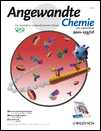Über die Quecksilberbrücke – ein Weg zu einem Diwasserstoffcobaltkomplex†
R.M.B. dankt dem U.S. Department of Energy, Office of Science, Office of Basic Energy Sciences, Division of Chemical Sciences, Biosciences and Geosciences für finanzielle Unterstützung. Das Pacific Northwest National Laboratory wird von Battelle für das U.S. Department of Energy betrieben.





